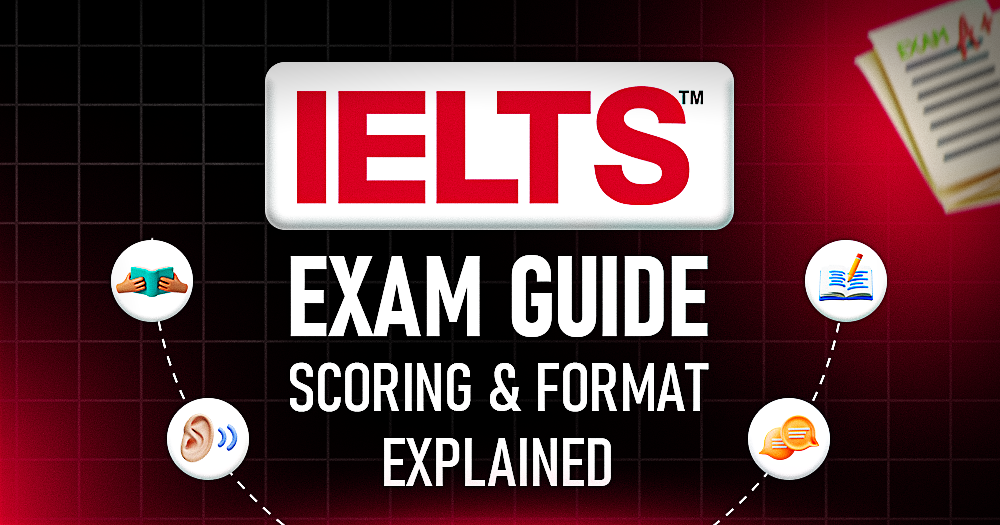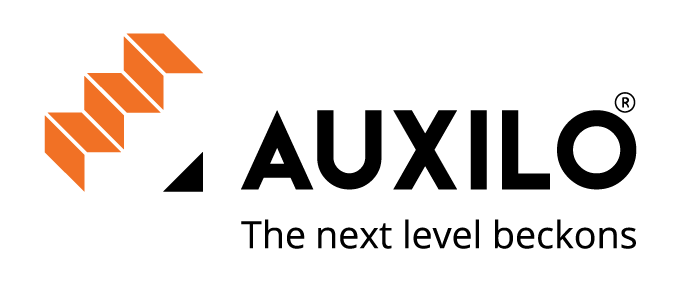Navigating the IELTS Exam: A Guide to Understanding Scoring and Exam Format
As an Indian student pursuing studies abroad, the IELTS exam is a critical milestone that one must overcome. Even though English is spoken fluently by over 125 million Indians, which exceeds the population of many English-speaking nations, it is one factor that makes many of us self-conscious. Stories about students requiring 2-3 attempts to get the required test score are all too familiar, and yet it should not be treated as a daunting challenge. As a product of the Indian education system, we have all grown accustomed to taking examinations since our early years. The key to success in any exam lies in one word: preparation. However, before diving into your IELTS preparation, it is critical to comprehend the exam format, content, and grading criteria. This will help you understand what to study and how to prepare effectively for the exam. This article will help you get answers to frequently asked questions about IELTS score and IELTS raw score to band conversion.
Choosing the Right IELTS Exam: Academic or General Training?
There are two main types of IELTS exams: Academic and General Training. The Academic IELTS exam is designed for individuals who want to study at an undergraduate or postgraduate level or seek professional registration in an English-speaking environment. This exam measures English language proficiency in academic contexts, including listening, reading, writing, and speaking.
On the other hand, the General Training IELTS exam is designed for individuals going to an English-speaking country for secondary education, work experience or training programs. This exam measures English language proficiency in practical, everyday contexts, including listening, reading, writing, and speaking.
The listening and speaking sections of both exams are the same. However, the reading and writing sections differ in content, format and difficulty level. The reading and writing sections in the Academic IELTS exam contain academic texts and tasks. In contrast, the reading and writing sections in the General Training IELTS exam include more general texts and tasks.
What is the minimum requirement for you?
The minimum IELTS band requirement depends on the purpose for which you are taking the exam. The IELTS exam requirements vary depending on the institution or organization that requires the test. Here are a few examples of minimum IELTS band score requirements for international students:
- University of Oxford (UK): minimum IELTS band score of 7.0 for undergraduate and 7.5 for graduate programs.
- Massachusetts Institute of Technology (MIT) (USA): minimum IELTS band score of 6.5 for undergraduate and graduate programs.
- University of Melbourne (Australia): minimum IELTS band score of 6.5 for undergraduate and graduate programs.
- University of Auckland (New Zealand): minimum IELTS band score of 6.0 for undergraduate and 6.5 for graduate programs.
- University of Toronto (Canada): minimum IELTS band score of 6.5 for undergraduate and graduate programs.
It’s important to note that these are just a few examples. The minimum IELTS band score requirements for international students may vary depending on the institution and program of study. It’s always a good idea to check with the institution you are applying to determine the specific requirements for international students.
Understanding all four sections of IELTS
The Academic IELTS exam consists of four sections designed to test different aspects of English language proficiency. These sections are:
1. Listening: The Listening section consists of four recordings of native English speakers that are played only once. Test takers must listen to each recording and answer a series of questions related to the recording. The recordings and questions become progressively more difficult as the test progresses, and the total time for the Listening section is approximately 30 minutes.
2. Reading: The Reading section consists of three long texts from books, journals, magazines, and newspapers. Test takers must read each text and answer a series of questions related to the text. The texts become more difficult as the test progresses, and the total time for the Reading section is approximately 60 minutes.
3. Writing: The Writing section consists of two tasks that test takers must complete in 60 minutes. Task 1 requires test takers to describe and interpret a graph, chart, table, or diagram in at least 150 words. Task 2 requires test takers to write an essay in response to a given prompt in at least 250 words. Test takers are evaluated based on their ability to address the task, organize their ideas, use appropriate vocabulary and grammar, and express their opinions clearly and coherently.
4. Speaking: The Speaking section consists of a face-to-face interview between the test taker and an examiner. The interview is divided into three parts and takes approximately 11-14 minutes to complete. In Part 1, the test taker is asked general questions about themselves and their interests. In Part 2, the test taker is given a topic and asked to speak for two minutes. In Part 3, the test taker and examiner engage in a more in-depth discussion related to the topic in Part 2.
Is there a difference between written and computerized tests?
Here is a difference between the written and computerized versions of the IELTS exam. The content and format of the exam are the same, but the delivery method is different. Test takers answer questions on a paper-based answer sheet in the written version, while in the computerized version, test takers answer questions on a computer. The Speaking section is still conducted face-to-face with an examiner for both versions. Students must choose wisely because this is a time-based exam, and they need assistance properly, depending on whether they are more comfortable with a written or computer-based exam.
What is the difference Between IELTS raw scores and bands?
The IELTS exam consists of four sections: Listening, Reading, Writing, and Speaking. The IELTS score calculation is based on a scale of 0 to 9. The scores for each section are then averaged to calculate the overall band score, which also ranges from 0 to 9.
The raw score for each section is based on the number of correct answers or the quality of the responses provided by the test-taker. The IELTS raw score is converted to a band score using a conversion table that considers both the difficulty level of the questions and the performance of all test-takers. Below is a conversion table to better understand how raw scores are turned into band scores.
Conversion Table
How is the Academic IELTS marked?
The Academic IELTS test is marked by certified examiners who follow a set of criteria for each exam section.
Listening and Reading section
Each correct answer is given one mark for the Listening and Reading sections, and the total number of marks is converted into the IELTS nine-band scale. The scores are reported in a whole number or half bands.
Writing section
For the Writing section, examiners use an assessment criteria to give a band score for each of the four criteria:
1. Achievement of Task (for Task 1); Response for Task (for Task 2)
2. Cohesion and Coherence
3. Lexical Resource
4. Grammatical Range and Accuracy
The score on the task is the average as the four criteria are weighted equally.
Speaking section
For the Speaking section, examiners use an assessment criteria to give a band score for each of the four criteria:
1. Fluency and Coherence
2. Lexical Resource
3. Grammatical Range and Accuracy
4. Pronunciation
The score on the task is average as the four criteria are weighted equally.
The Overall Band Score is then calculated by taking the average of the four section scores, rounded to the nearest whole or half band. Each section is given equal weight in calculating of the Overall Band Score.
The IELTS exam can be the ticket to an exciting new chapter in your life, whether studying abroad or pursuing a career in an English-speaking country. To make your dreams a reality, preparing thoroughly for the exam is crucial. That means understanding the format, content, and grading criteria. Keep in mind that minimum band requirements vary depending on the institution and program of study, so it’s always wise to double-check specific requirements. Whether you choose the written or computerized exam version, the content and format are the same, with only the delivery method differing. With proper preparation and hard work, achieving a good IELTS band score is possible, paving the way for an exciting academic or professional career. And why not consider Collegepond’s IELTS coaching program, with offline and online options available to make your study abroad journey as smooth as possible?





































